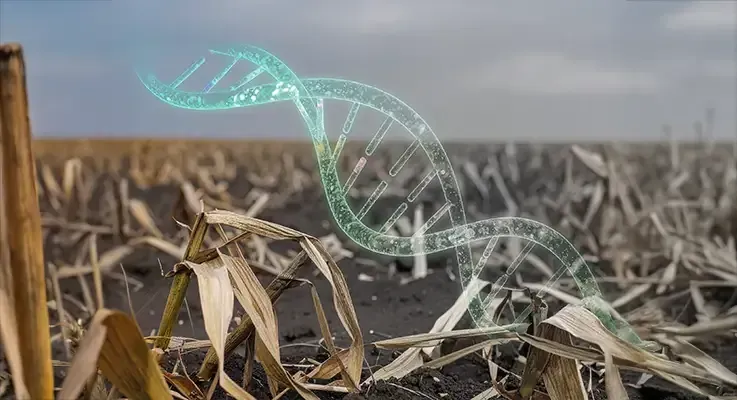Why The Gene Technology Bill is Unsafe – NZ
The New Zealand Government is promoting its Gene Technology Bill as an “update to match science and technology.” In reality, this law would deregulate genetically engineered (GE) crops in ways that ignore well-documented harms and global experience.
Independent research and international case studies demonstrate that GE crops are not only failing to deliver safety promises but are also directly linked to ecological damage, health risks, and costly regulatory failures.
An example of just one study's conclusion following chronic ultra-low dose Roundup exposure: "Our results suggest that chronic exposure to a GBH in an established laboratory animal toxicity model system at an ultra-low, environmental dose can result in liver and kidney damage with potential significant health implications for animal and human populations."
Ecological Harms Already Seen from GE Crops
Monarch butterfly decline
The expansion of glyphosate-tolerant GE corn and soy in North America has been directly linked to the loss of milkweed – the only plant monarch caterpillars can eat. Large-scale eradication of milkweed has contributed to monarch population crashes.
Secondary pest outbreaks
In northern China, the widespread planting of Bt cotton initially reduced bollworm pressure, but new “secondary” pests surged in response. Mirid bugs spread across multiple crops, showing that altering pest dynamics with GE traits can destabilise ecosystems.
Herbicide drift and off-target damage
The adoption of dicamba-tolerant GE crops in the U.S. led to millions of acres of unintended damage from drifting spray. Farmers and conservationists reported widespread harm to orchards, vineyards, vegetables, and native plants—problems so severe that regulators were forced into ongoing restrictions and court cases.
Gene escapes into the wild
Surveys in North America have found feral GE canola populations growing along roadsides, some carrying stacked herbicide-resistant traits. This persistence demonstrates that GE traits are not fully contained and can spread into unmanaged environments.
Documented Human and Food Safety Concerns
Food chain contamination
The “StarLink” case in the U.S. revealed how a GE corn variety approved only for animal feed entered the human food supply. The contamination resulted in nearly 300 product recalls, significant trade disruptions, and allergy investigations.
Residues in GE soybeans
Market basket analyses reveal that Roundup Ready soybeans frequently contain measurable glyphosate residues, unlike conventional or organic soy. This means GE crops are increasing pesticide exposure in the human diet—contradicting claims of equivalence and safety.
Allergins
In the early 1990s, researchers at the University of Nebraska inserted a gene from the Brazil nut into soybeans to enhance their methionine content, an essential amino acid. However, the modified soybeans expressed a protein that was a known allergen in Brazil nuts. When tested, individuals with Brazil nut allergies experienced allergic reactions upon exposure to the GM soybeans. This led to the termination of the project, demonstrating the potential for unintended allergenicity in GM foods.
Environmental pathways to health risks
Studies have shown that Bt toxins from GE corn can wash into waterways, affecting sensitive aquatic insects. This highlights how GE traits can move beyond fields into ecosystems that also support human health.
Why This Matters for New Zealand
NZ already has some of the world’s highest cancer rates, and our unique biodiversity is especially vulnerable to chemical-intensive agriculture. The Gene Technology Bill would deregulate GE crops in ways that increase pesticide use, reduce ecological resilience, and expose New Zealand to the same failures already documented overseas.
Rather than fast-tracking risky genetic technologies tied to chemical dependency, NZ should be investing in ecological, organic, and regenerative farming systems that protect both people and the environment.
(Read more about the financial risks of the Gene Technology bill here).
The evidence is clear: GE crops designed for pesticide use are unsafe, unnecessary, and incompatible with a healthy food future for New Zealand.
References
- Séralini, G-E. et al. (2012). Long term toxicity of a Roundup herbicide and a Roundup-tolerant genetically modified maize.
https://enveurope.springeropen.com/articles/10.1186/s12302-014-0014-5
Summary: The 2012 study by Séralini et al., which reported long-term toxicity of GM maize NK603 and Roundup herbicide in rats, was retracted in 2013 by Food and Chemical Toxicology. The official reason cited was that the study's data were inconclusive and its conclusions unreliable. However, the retraction was not due to evidence of fraud or misconduct.
Many critics confirm that the retraction was influenced by political and industry pressures rather than by genuine scientific concerns. The study had already undergone peer review before publication, and the methodology, followed recognised toxicology procedures. The retraction appeared to be prompted by the controversial nature of the findings and by concerns about public reaction and commercial interests, rather than by objective scientific flaws. It was republished: 24 June 2014
_____________________
- Mesnage, R. et al. (2017). Transcriptome profile analysis reflects rat liver and kidney damage following chronic ultra-low dose Roundup exposure
https://ehjournal.biomedcentral.com/articles/10.1186/s12940-015-0056-
The long term and found significant liver and kidney gene expression changes, consistent with structural and functional organ damage (Mesnage et al., 2015). These results are reinforced by Panzacchi et al. (2025), which reported increased tumor incidences and carcinogenic effects in rats following long-term glyphosate-based herbicide exposure from prenatal life (Panzacchi et al., 2025).
Together, these studies demonstrate the potential health risks of chronic exposure to glyphosate-based herbicides. This is relevant to the proposed Gene Technology Bill, as deregulation of gene-edited crops would likely increase the use of such herbicides on herbicide-tolerant crops, potentially amplifying these documented risks to human and environmental health.
_____________________
- Monarch butterfly and milkweed decline
Pleasants, J. M., & Oberhauser, K. S. (2013). Milkweed loss in agricultural fields because of herbicide use and its impact on monarch butterflies. Insect Conservation and Diversity, 6(2), 135–144.
https://resjournals.onlinelibrary.wiley.com/doi/10.1111/j.1752-4598.2012.00196.x
_____________________
- The StarLink corn report (Krimsky, 2010) highlights regulatory failures and contamination risks, including reports of allergic reactions in humans, associated with an unapproved genetically engineered corn variety, without promoting genetically engineered crops or pesticide use. chrome-extension://efaidnbmnnnibpcajpcglclefindmkaj/https://media.rff.org/documents/RFF-RPT-StarLink.pdf?utm_source=chatgpt.com
_____________________
- Brazil Nut Protein in GM Soybeans
https://www.nejm.org/doi/full/10.1056/NEJM199603143341103
_____________________
- Rosi-Marshall, E. J., Tank, J. L., Royer, T. V., Whiles, M. R., Evans-White, M., Chambers, C., ... & Stephen, M. L. (2007). Toxins in transgenic crop byproducts may affect headwater stream ecosystems. PNAS, 104(41), 16204–16208.
https://www.pnas.org/doi/full/10.1073/pnas.0707177104
Summary: This study found that Bt corn byproducts (pollen, leaves, and stalks) entering headwater streams reduced growth and increased mortality of nontarget aquatic insects, such as caddisflies, potentially disrupting stream food webs. Bt corn (corn genetically engineered to produce an insecticidal protein from the bacterium Bacillus thuringiensis, or “Bt”) demonstrates that transgenic crops can have unintended ecological effects beyond terrestrial environments, underscoring the importance of assessing GE crops’ broader environmental impacts.
_____________________
- Glyphosate residues in soy / human exposure Mesnage, R., Clair, E., Gress, S., et al. (2015). Cytotoxicity and gene expression alterations in human cells exposed to glyphosate and Roundup formulations. Environmental Health, 14: 43.





